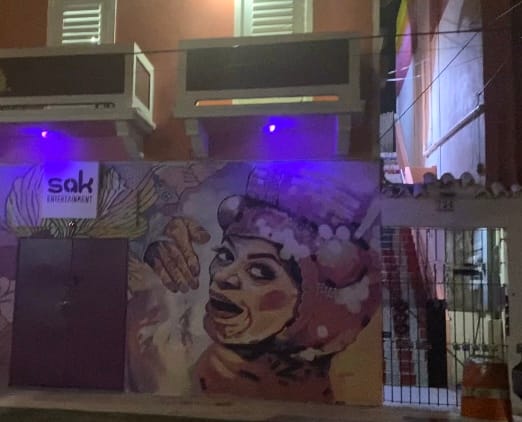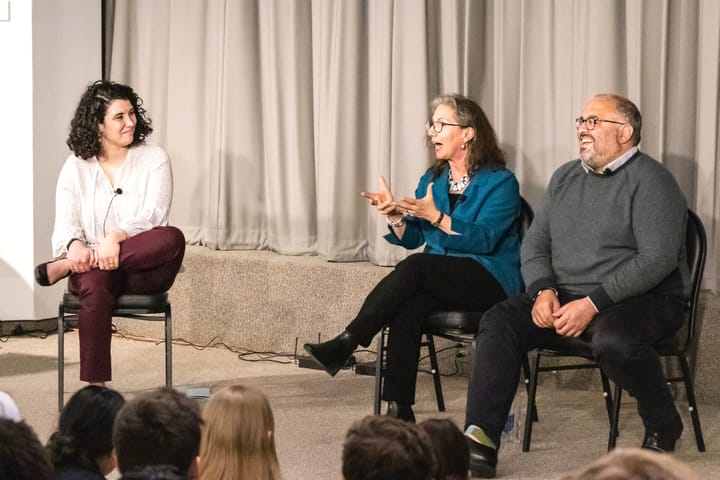The Mesmerizing Murals of Santurce, San Juan
The neighborhood of Santurce in San Juan is known for its vibrant street art. Cassidy Duncan ’25 discusses the rich history and culture of Puerto Rican murals, which she prompted to investigate during a spring break trip.


If you walk through the streets of San Juan, Puerto Rico, you’ll likely find yourself drawn into beautiful, expressive murals that adorn the building walls. Robust and vibrant during the day, these murals also color the shadows of night with their deep, rich values — their tenacious effort to capture the attention of passerby during all hours creates a permanence that allows the works to be constantly seen and their messages loudly heard.
As a first-time visitor to San Juan over spring break, I was thrilled to be in a place that was new to me. My days were filled with delicious food, kind people, and beautiful beaches, but what colored my experiences most brightly were the consistently impressive murals found at every corner I explored. At first glance, the works appear to have firmly grounded roots in historical or current events. My unfamiliarity with Puerto Rican street art implored me to learn about its truths.
While Puerto Rico is home to world-renowned museums and galleries, its artistic depth extends far beyond these traditional settings; to see its art, all one needs to do is step outside. Throughout the streets of San Juan, artists have used unconventional mediums, such as buildings, to create expressive works that explore important topics and convey the voice of the community. In the neighborhood of Santurce, for example, the walls of formerly run-down buildings are adorned with beautiful murals that not only breathe new life into the neighborhood but also address important socioeconomic issues, such as job loss created by natural disasters and the coronavirus pandemic. The beauty and significance of such works has established Santurce as the primary art district of San Juan.
Strengthening its draw as an artistic hub, Santurce also hosts the Santurce Es Ley festival. Founded in 2010, this is an annual festival celebrating music, food, and art. During the festival, Santurce welcomes 20 international artists to create murals throughout the community, while attracting over 15,000 people who come to see the art. The festival continues to paint beauty into the streets of San Juan each year and enhance its rich artistic atmosphere.
My experience in Santurce happened by chance, when I unwittingly stumbled into the arts district one night. I was blown away by how the art commanded my attention, drawing me in even in the low light of night. With each mural I saw, my fascination with the city’s art grew and so too did my deep appreciation for those who created it.
Having explored the arts district unknowingly, I was unexpectedly captivated by the murals I saw, which left a deep imprint on my memory. That is the beauty of street art. It can surprise and engulf onlookers into an authentic, natural experience. Its raw existence within the everyday world breaks down the usual separation between art and the people who are meant to see it. In this context, where art comes to the viewer, instead of the viewer seeking it out, the experience of art is bold and accessible; the pieces will be seen by whoever happens to walk past them.

In addition to its artistic value, the importance of street art as a tool for social progress cannot be understated. Puerto Rican street artists have an inspiring ability to engage with political and socioeconomic issues through their work and effectively inspire change when political action fails to do so. The murals of San Juan are a powerful testament to art’s impact in this regard.
Even though it exists outside of a formal museum setting, street art should be no less appreciated than traditional works of art. If anything, it should be appreciated even more for the unique immersive experience it creates. While street art may engage with issues specific to its community, its qualities of immersion, inclusion, and boldness can be universally applied. Although I only saw a fraction of the copious amounts of street art San Juan offers, it was enough to leave a lasting impression and urge me to stay curious about the art around me and what it says about the world it lives in.




Comments ()